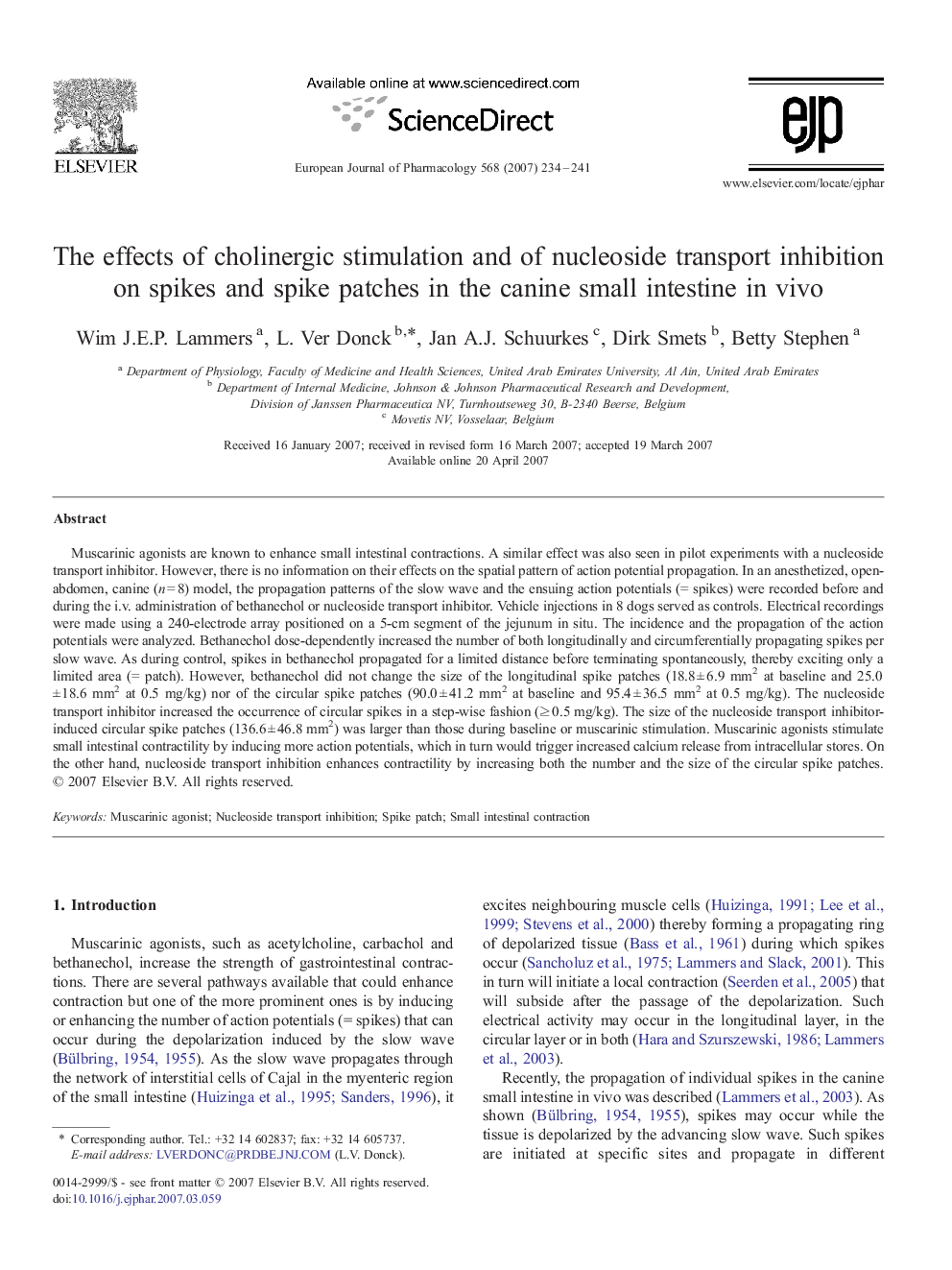| Article ID | Journal | Published Year | Pages | File Type |
|---|---|---|---|---|
| 2536014 | European Journal of Pharmacology | 2007 | 8 Pages |
Muscarinic agonists are known to enhance small intestinal contractions. A similar effect was also seen in pilot experiments with a nucleoside transport inhibitor. However, there is no information on their effects on the spatial pattern of action potential propagation. In an anesthetized, open-abdomen, canine (n = 8) model, the propagation patterns of the slow wave and the ensuing action potentials (= spikes) were recorded before and during the i.v. administration of bethanechol or nucleoside transport inhibitor. Vehicle injections in 8 dogs served as controls. Electrical recordings were made using a 240-electrode array positioned on a 5-cm segment of the jejunum in situ. The incidence and the propagation of the action potentials were analyzed.Bethanechol dose-dependently increased the number of both longitudinally and circumferentially propagating spikes per slow wave. As during control, spikes in bethanechol propagated for a limited distance before terminating spontaneously, thereby exciting only a limited area (= patch). However, bethanechol did not change the size of the longitudinal spike patches (18.8 ± 6.9 mm2 at baseline and 25.0 ± 18.6 mm2 at 0.5 mg/kg) nor of the circular spike patches (90.0 ± 41.2 mm2 at baseline and 95.4 ± 36.5 mm2 at 0.5 mg/kg). The nucleoside transport inhibitor increased the occurrence of circular spikes in a step-wise fashion (≥ 0.5 mg/kg). The size of the nucleoside transport inhibitor-induced circular spike patches (136.6 ± 46.8 mm2) was larger than those during baseline or muscarinic stimulation.Muscarinic agonists stimulate small intestinal contractility by inducing more action potentials, which in turn would trigger increased calcium release from intracellular stores. On the other hand, nucleoside transport inhibition enhances contractility by increasing both the number and the size of the circular spike patches.
